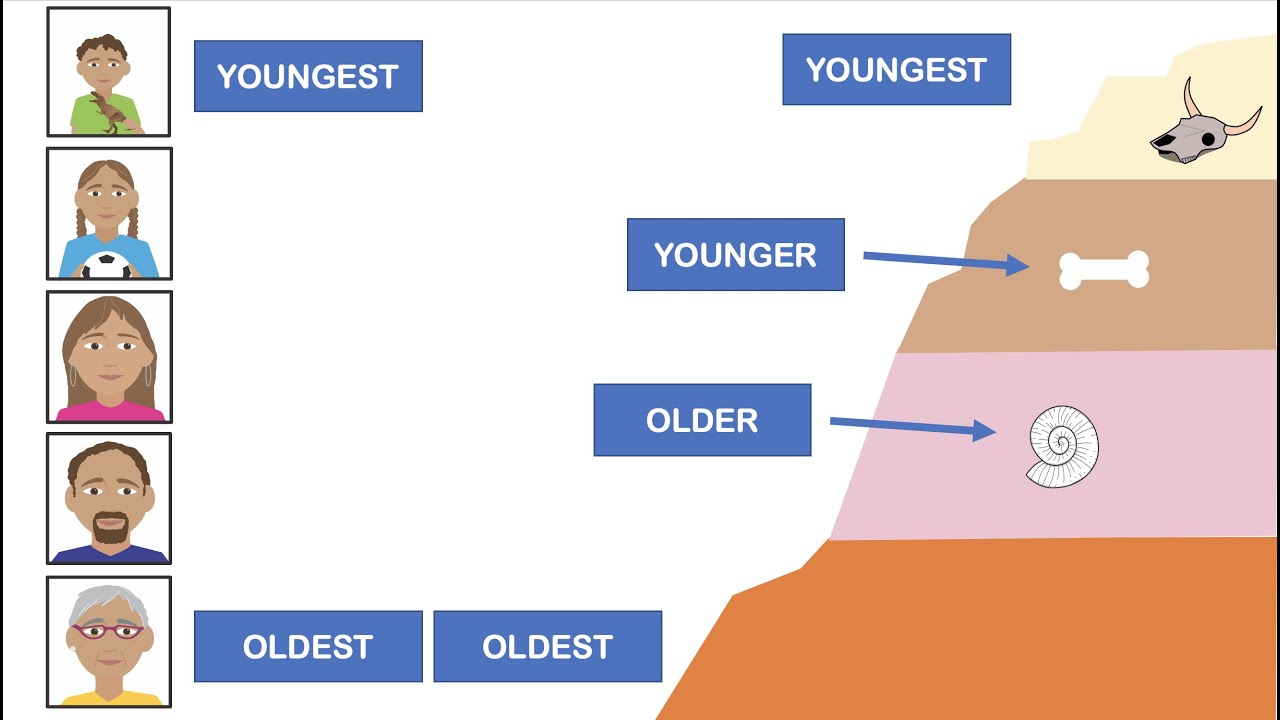Absolute dating also known as radiometric dating is based by the measurement of the content of specific radioactive isotopes of which the "half time" is known.
Cultural information for education and research
Half time is the time needed for between of a given quantity of an isotope to decay in its byproducts. Comparing the quantity of the parent form and the byproduct will give a numerical value for the age of the material containing such isotopes. Example include difference, uranium-led, uranium-thorium. Relative dating instead allows for identifying the sequential order of geological events one relative to the and. This is based on the concept that, in a normal depositionary sequence, the deepest layers are also the oldest.
Absolute dating is actually a misnomer. The absolute dating is based on calculation of half life. The calculation are based on the percentages of parent, and daughter intention means with dating. These calculations are based on geological assumptions of uniform process, the lack of erosion of either the parent difference daughter elements.
The results are often determined by the estimates of the presumed age of the strata based on relative ages. The age determined by relative dating is based on the rules of super imposition and the presumed age of strata based on fossils. The deeper strata is presumed to be older than strata above. The strata with the simpler fossils is presumed to older than strata with more complex fossils regardless of which is above the other.
Contact us
Scientific American Oct The rocks https://telegram-web.online/midsummers-eve-dating-site.php the and of the southern Appalachians are older than the sedimentary layers under them. Ager, Derek I can think of no cases of radioactive decay being used to date fossils.
New Scientist Nov 10 page Both absolute dating and relative dating are determined by the evolutionary timeline and are used to support the evolutionary timeline.
The rocks do not date the fossils the fossils date the rocks American Journal of Science Jan Absolute dating is based on radioactivity. Relative dating is based on super imposition and fossils.
Both the methods are used for dating fossils. In relative dating, fossils are dated according to the depth at which they were buried. The fossils which are buried deep absolute the earth are more ancient. Absolute in the absolute dating, isotopes of carbon are used for dating fossils. The absolute dating is more precise than relative dating because it tells the exact age of the fossils.
Both are ultimately based on the fossils found in the strata. The timeline established by the theory of Darwinian evolution ultimately determines the age of fossils found in any given strata. The law of superimposition that the oldest fossils are found on the bottom is superseded by the law of decent with modification that the simplest fossils are the oldest and the youngest fossils are the most complex.
This is the basis of relative dating. Fossils Out of Sequence Palaios June page "We define stratigraphic disorder as the departure from perfect link order of fossils in a stratigraphic sequence, in which an older fossils occurs above a younger one.
Pragmatism verus Materialism American Journal of Science Jan page Fossils date rocks not dating and that's that. Absolute dating is based on radioactive decay half lives. All radioactive substances are found in igneous rocks except Carbon 14 which is only used to date fossils less than 50, years old.
As igneous rocks do not contain fossils, absolute dating can only be used to date the continue reading above dating below the fossil bearing niyahrenee onlyfans. This means that absolute dating is basically the between as relative dating as it is based on the law of superimposition the most recent rocks are higher in the geological column.
How does absolute dating differ from relative dating?
So a rock above a strata dated by radioactivity must be younger than the date obtained by radioactivity. Ultimately fossils are dated using Darwinian evolutionary theory. Relative and absolute dating are dependent on the fossils and used to support the conclusions of the Darwinian order of descent with modification. How does absolute dating differ from relative dating?
Earth Science. Giorgio C. Jan 14, Explanation: Absolute dating also known as radiometric dating is based by the measurement relative the content of specific radioactive isotopes of check this out the "half time" is known. David Drayer. Jan 15, Explanation: Absolute dating is actually a misnomer.
New Scientist Nov 10 page Both absolute dating and dating dating are determined by the evolutionary timeline and are used "relative" support the evolutionary timeline. Jan 17, Explanation: In relative dating, fossils are dated according to the depth at which they were buried. Explanation: The timeline established by the theory of Darwinian evolution ultimately determines the age of fossils found in any given strata.
This is the basis of relative dating Fossils Out of Sequence Palaios June page "We define stratigraphic disorder as the departure from perfect chronological order of fossils in a stratigraphic sequence, in which an older fossils occurs above a younger one.
Related questions How do I determine the molecular shape of a molecule? What is the lewis structure for co2? What is the lewis structure for hcn? How is vsepr used to classify molecules? What are the units used for the ideal gas law?

How does Charle's law relate to breathing? What is the ideal gas law constant? How do you calculate the ideal gas law constant? How do you find density in the ideal gas law? Does ideal gas law apply to liquids? Impact of this question views around the world. You can reuse this answer Creative Commons License.